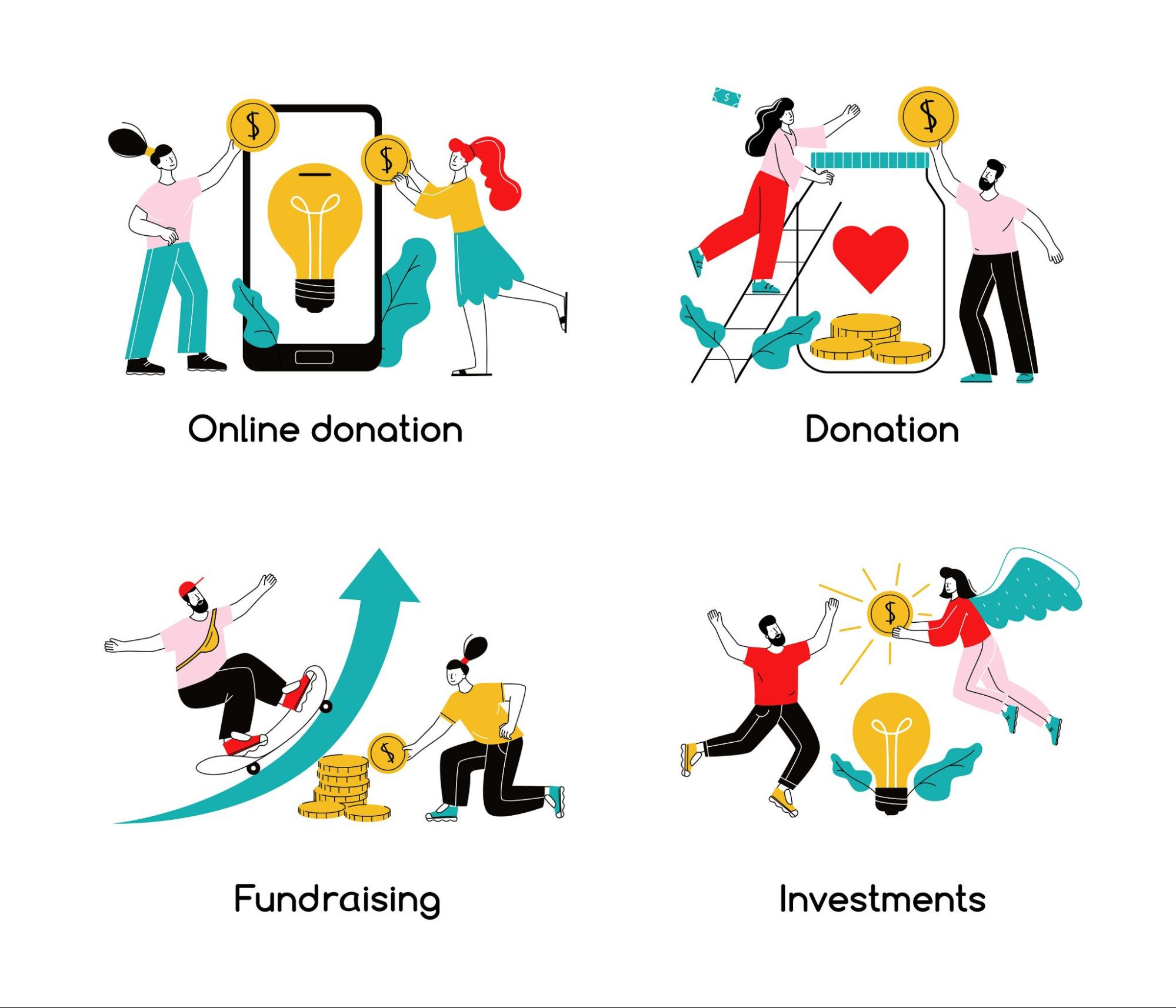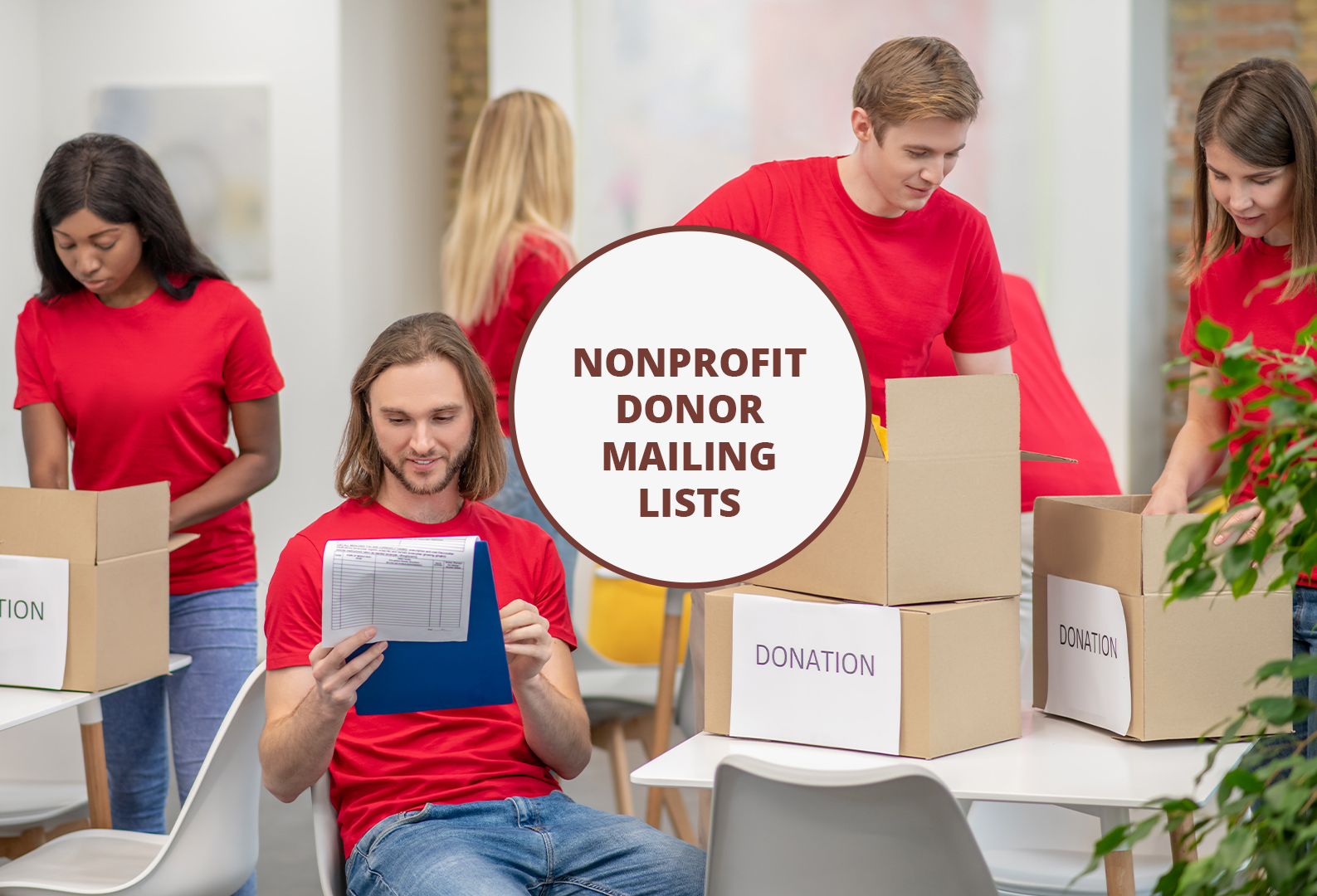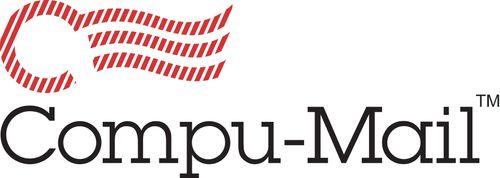
Building a donor mailing list is crucial for fundraising success. It involves compiling a database of individuals or organizations interested in supporting your cause financially. The process begins by identifying potential donors who align with your organization’s mission and values. Regular communication with donors, including newsletters, updates, and personalized appeals, helps maintain their engagement and foster a sense of connection to your cause.
Additionally, segmenting your donor list allows for targeted communication and tailored fundraising campaigns. By continuously expanding your donor mailing list, you create a strong foundation for sustainable fundraising efforts, enabling your organization to achieve its goals and make a positive impact on the community.
Why Should you build a Donor Mailing List?

Building a donor mailing list is critical for several reasons. Firstly, it helps to establish and maintain relationships with donors. By collecting their contact information, you can communicate with them regularly, update them on your organization’s work, and thank them for their contributions. This helps to build trust, foster loyalty, and increase the likelihood of future donations.
Secondly, the nonprofit donor mailing lists enable nonprofits to tailor their messaging to specific donors. By segmenting your list based on factors such as giving history, interests, and location, you can personalize your communication with each donor, making it more relevant and engaging.
Lastly, a donor mailing list provides valuable data that can inform future fundraising efforts. By analyzing the data, nonprofits can gain insights into donor behavior, track the effectiveness of their campaigns, and make data-driven decisions about future fundraising strategies.
Who can Benefit from Nonprofit Donor Mailing List?
Any business involved in philanthropic efforts or has a socially responsible mission can benefit from purchasing a nonprofit donor mailing list. Here are some examples of businesses that may find a nonprofit donor mailing list useful:
Nonprofit Organizations
Nonprofit organizations can benefit greatly from purchasing a nonprofit donor mailing list. It can help them identify potential donors interested in their cause and tailor their fundraising efforts accordingly.
Social Enterprises
Social enterprises are businesses that aim to make a positive impact on society or the environment. By purchasing a nonprofit donor mailing list, they can identify potential customers who share their values and are likely to support their business.
Cause-Related Marketing Businesses
Cause-related marketing businesses aim to connect with customers through philanthropic efforts. By purchasing a nonprofit donor mailing list, they can identify potential customers who are interested in their cause and tailor their marketing efforts accordingly.
Community-Based Businesses
Community-based businesses, such as local shops and restaurants, can benefit from purchasing a nonprofit donor mailing list. By identifying potential customers interested in supporting local charities and causes, they can tailor their marketing efforts to appeal to these customers and build stronger relationships with the community.
Corporate Social Responsibility Programs
Businesses with a corporate social responsibility program can benefit from purchasing a nonprofit donor mailing list. It can help them identify potential partners and causes supporting and build stronger relationships with customers and employees who share their values.
Ways to Build a Great Donor Mailing List
Building a great donor mailing list is critical for any nonprofit organization’s fundraising efforts. A well-curated list can help you connect with potential and existing donors, personalize your communication, and gain valuable data insights. Here are some ways to build a great donor mailing list:
Leverage Your Existing Network
Start by contacting your existing network of supporters, volunteers, and staff members. Ask them to provide their contact information and encourage them to share your organization’s message with their networks.
Use Your Website
Your organization’s website is an excellent tool for building your mailing list. Include a prominent sign-up form on your website’s homepage, and make it easy for visitors to sign up by requiring only essential information such as name and email address.
Host Events
Organize events, such as fundraisers or community gatherings, to build relationships with potential donors. Collect contact information from attendees and use it to add them to your mailing list.
Social Media
Social media is a powerful tool for connecting with potential donors. Use your organization’s social media pages to promote your cause and encourage followers to sign up for your mailing list.
Direct Mail
Direct mail can be an effective way to build your mailing list for nonprofits, especially for reaching potential donors who are not yet familiar with your organization. Include a sign-up form in your mailings and offer an incentive for signing up.
Collaborate with Other Organizations
Partner with other organizations in your community to build your mailing list. Cross-promote your organizations and encourage supporters to sign up for both mailing lists.
Offer Incentives
Encourage sign-ups by offering incentives such as exclusive content, event access, or other benefits. This can increase the number of people who sign up for your mailing list.
Benefits of Building a Donor Mailing List
Building a donor mailing list can provide a wide range of benefits for a nonprofit organization. Here are some of the top benefits of building a donor mailing list:
Improved Communication
A donor mailing list allows you to communicate directly with your supporters, which helps to build stronger relationships and increase engagement. You can keep your donors informed and connected to your organization’s mission by sending regular updates, newsletters, and appeals.
Personalization
With a donor mailing list, you can personalize your communication to each recipient, addressing them by name, tailoring your message to their interests, and giving history. This personalization can build trust and encourage continued support.
Creating the best donor acquisition mailing requires a targeted and personalized approach. This means identifying your ideal audience and tailoring your message to their needs and interests. By taking the time to understand your audience and crafting a compelling message, you can increase your chances of success and achieve your fundraising goals.
Increased Donations
A well-curated donor mailing list can help you identify donors most likely to give and target your appeals accordingly. This targeted approach can lead to increased donations and improved fundraising results.
Cost-Effective
Compared to other marketing and outreach methods, building a donor mailing list can be a cost-effective way to reach potential donors. Once you have a strong mailing list, the cost of sending regular updates and appeals is minimal compared to the potential return on investment.
Valuable Data Insights
By tracking engagement and donation history, a donor mailing list can provide valuable data insights to inform your fundraising strategy. You can use this data to identify trends, improve communication, and make data-driven decisions that improve fundraising results.
7 Top Techniques for Building a Compelling Donor Acquisition Mailing List
Direct mail donor acquisition is a crucial aspect of any successful fundraising campaign. With direct mail donor acquisition, you have a powerful tool to reach out to new donors. However, not all donor acquisition mailings are created equal. To make the most of your efforts and achieve your fundraising goals, it’s essential to focus on creating the best donor acquisition mailing possible.
One of the key metrics for measuring the effectiveness of your donor acquisition mailing is response rate. Your response rate refers to the percentage of recipients who take the desired action after receiving your mailing. To improve your response rate, you need to craft a compelling message that resonates with your target audience. Apart from response rate, you should also evaluate other metrics like conversion rate and cost per acquisition. These metrics can help you determine how much it costs to acquire new donors and how many of them actually donate.
When building your donor mailing list, there are certain elements to keep in mind that allow you to shape your list into a strong and actionable file. This, in turn, will allow you to personalize your outreach and increase average donations. Here are top tips for building a better donor mailing list:
Keep Track of Gift History
Tracking this information allows you to deliver personalized experiences that keep donors active in future campaigns. If you know what they have given in the past, you know where to start the ask amount next time and can implement what is known as an ask matrix. An ask matrix is a grid of suggested ask amounts based on the donor’s previous gift. If they gave $50 last year, the minimum asks amount would be $50 and the other suggested amounts would increase from there. When you suggest their most recent gift as the starting point for the next gift, you are subliminally encouraging a donor to give that amount again. You may even encourage them to give more – they may wish to appear as more generous than just donating the minimum. It’s also a good idea to track gift history, so you can identify lapsed donors and send them targeted messages that encourage them to re-engage with your cause. Your lapsed donors are an important source for your campaigns: they are already familiar with you, having donated in the past, and will most likely donate again if asked. Not to mention, the average cost to acquire a new donor is $25, so by focusing some of your attention on existing donors, you overcome some of that cost.
Don’t Overlook your Prospect List
While part of your focus should be on current and active donors, your primary focus should be prospecting to acquire new donors continually. Donor acquisition is critical for every non-profit. Every year, your house list loses at least 55% of its volume. There is a lot of turnover, as 60-90% of first time donors don’t donate again the next year, plus a portion of your list will move or pass away. The great news is that you don’t have to start from scratch. There are great resources out there that can help you identify what general characteristics your current donors share and use that information to build your prospect list using what is known as modeling. You can use predictive or Look-A-Like modeling to identify the prospects that look exactly like your most loyal donors. This means that you can target your outreach, filtering the list down to those that are the most likely to respond.
Ask for Referrals
One of the most important things you can do is ask your donors who they know that might be interested in your cause. Having them advocate for you via word of mouth can help you grow your list “organically.” Referrals work well because they rely on the authority and trust between donors and their friends. A good potential fit for this is a United States Postal Service (USPS) product called Share Mail. This allows recipients to mail pre-printed postcards to their friends saying they have donated and ask the friends to donate as well. This can also be used to invite their friends to an event they are attending, as they might do with a Facebook event page, allowing them to interact with a physical touchpoint that may have a more personal feel than the digital equivalent. Contact Compu-Mail today to schedule a fit assessment to see if Share Mail is right for you.
Host Events
Hosting events can help you connect with potential donors and prospects in-person. You can collect contact information from attendees and add them to your mailing list. Additionally, events provide an opportunity to engage with your current donors and strengthen those relationships.
Offer Incentives
Offering incentives can encourage individuals to join your mailing list. For example, you could offer a discount code for your online store or a free resource, such as an e-book or white paper, in exchange for signing up.
Use Social Media
Social media can be an effective tool for building your mailing list. You can promote your cause and encourage individuals to sign up for your mailing list on your social media platforms.
Segment Your List
Direct marketing list segmentation allows you to tailor your messaging to specific groups of donors or prospects. You can segment your list based on gift amount, location, interests, or any other relevant data. This helps to ensure that your messaging is relevant and personalized.
Achieving Fundraising Success with Compu-Mail’s Donor Mailing List Services

At Compu-Mail, we are dedicated to helping organizations build a strong donor mailing list and achieve fundraising success. With over 30 years of experience in direct marketing, we have the expertise and knowledge to help organizations of all sizes and industries achieve their goals.
We offer a comprehensive range of services, from data analytics to direct mail campaigns to list management, that are tailored to the unique needs of each organization. What sets us apart is our commitment to delivering results. Our data-driven strategies and best practices are designed to maximize fundraising potential and help organizations achieve their goals.
By choosing Compu-Mail, organizations can trust that they are working with a partner who is dedicated to their success. Our focus on delivering results means that we don’t just build donor mailing lists – we build targeted, effective lists that deliver results.
So, if you’re looking to achieve fundraising success, why settle for anything less? Choose Compu-Mail and experience the difference for yourself.
Frequently Asked Questions
Q: What does buying a nonprofit direct mail list mean?
A: Buying a nonprofit direct mail list involves purchasing a database of contact information for individuals or organizations likely to support nonprofit causes. Utilizing such lists enables nonprofits to expand their outreach, target potential donors more effectively, and increase the success of fundraising efforts.





